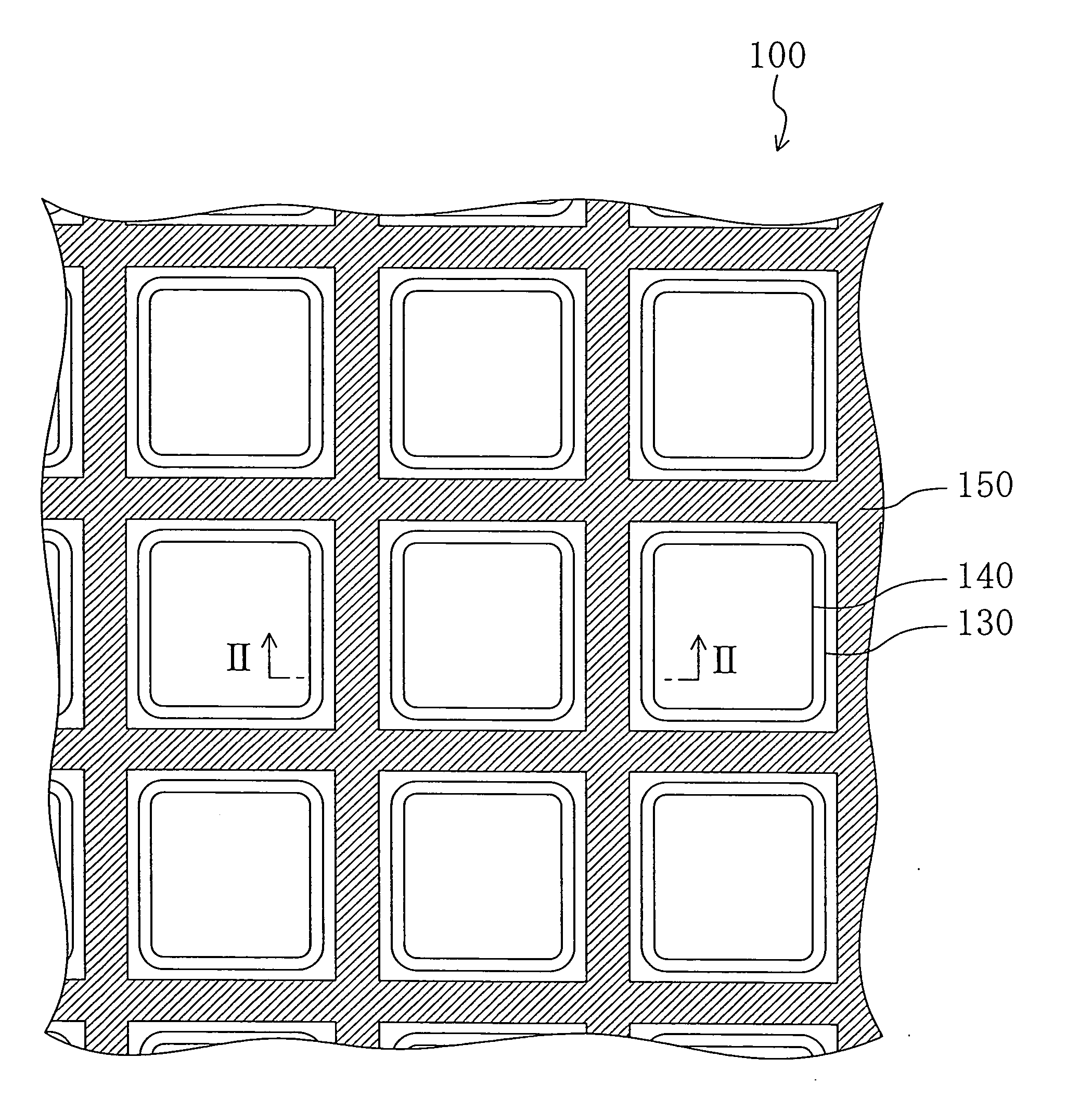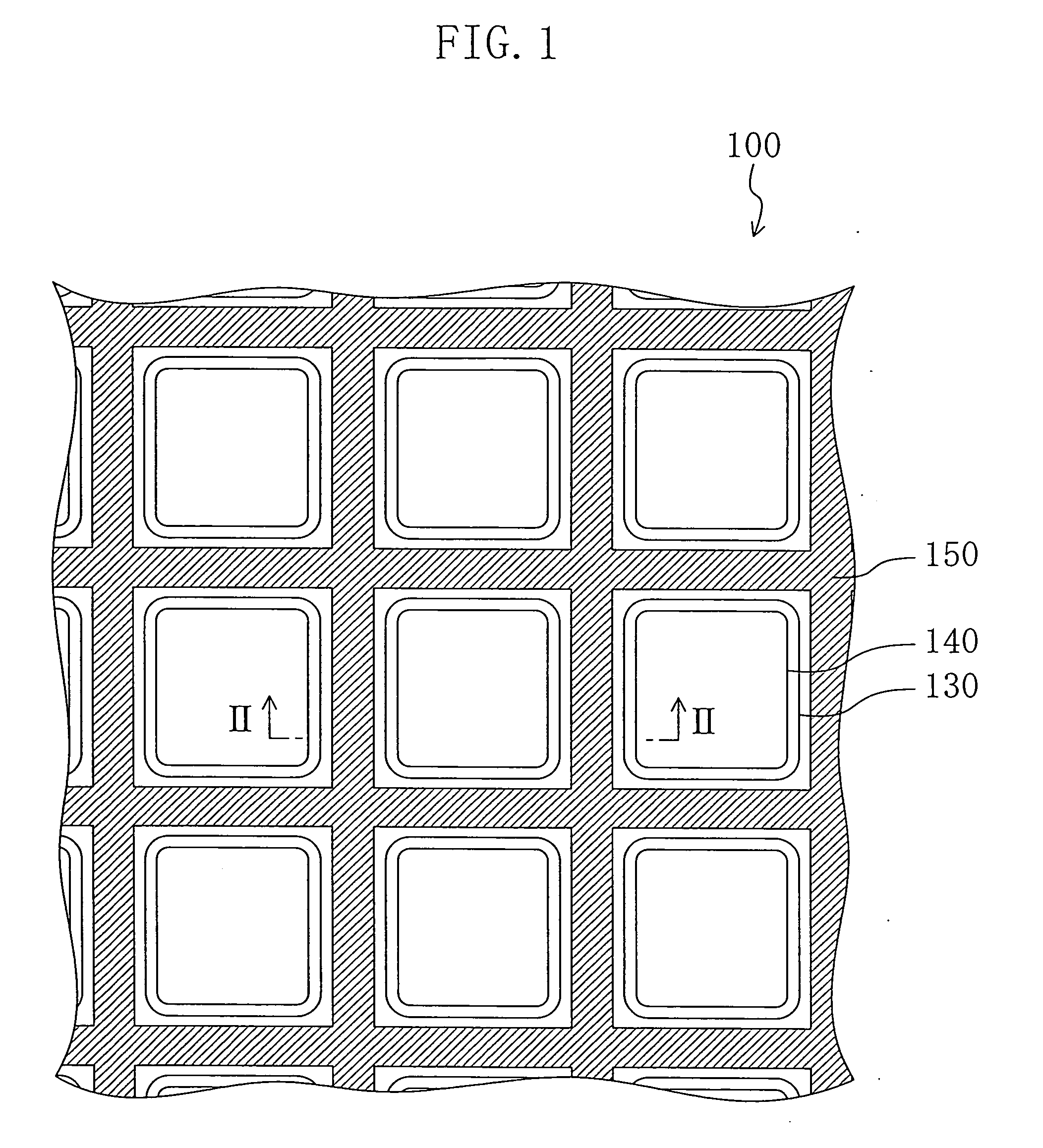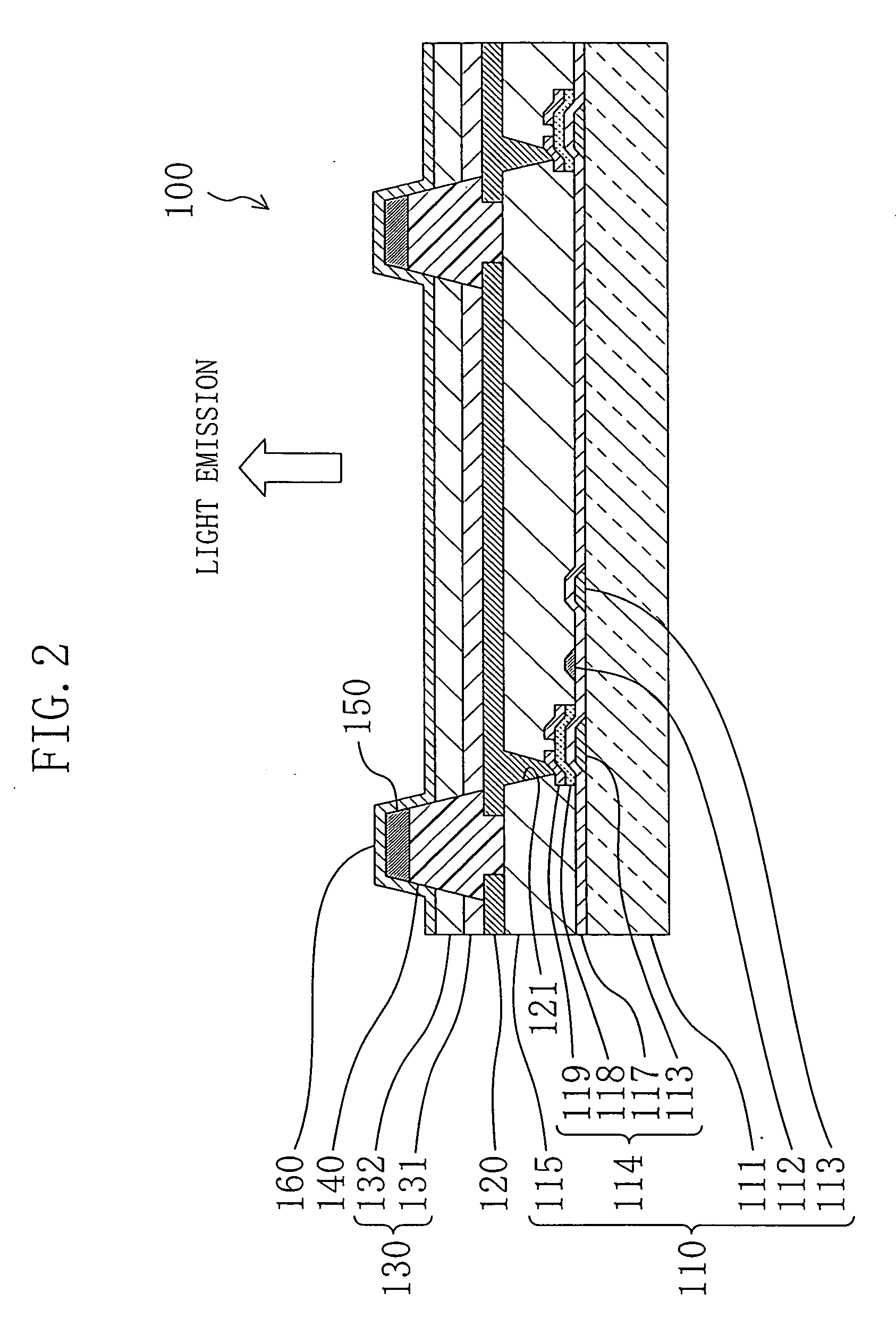Organic light emitting element, display device including the same and method for manufacturing organic light emitting element
a technology of organic light emitting elements and display devices, which is applied in the direction of discharge tubes/lamp details, organic semiconductor devices, discharge tubes/lamp details, etc., can solve the problems of high drive voltage, inability to apply uniform voltage to the second electrode, and inability to perform image display with high uniformity, etc., to achieve the effect of high luminance and image display
- Summary
- Abstract
- Description
- Claims
- Application Information
AI Technical Summary
Benefits of technology
Problems solved by technology
Method used
Image
Examples
embodiment 1
[0048]FIG. 1 is a schematic plan view illustrating an organic EL element 100 of Embodiment 1.
[0049]FIG. 2 is a schematic sectional view taken along the line II-II shown in FIG. 1.
[0050] The organic EL element 100 includes a thin film transistor (TFT) substrate 110, a plurality of first electrodes 120 which are arranged on the TFT substrate 110 in a predetermined configuration (e.g., a matrix configuration), a wall-like insulating layer 140 which isolates the first electrodes 120 from each other, organic light emitting layers 130 formed on the first electrodes 120, respectively, an auxiliary electrode 150 formed on the wall-like insulating layer 140 and a second electrode 160 which is formed to cover the surfaces of the wall-like insulating layer 140, the auxiliary electrode 150 and the organic light emitting layers 130 and electrically connected to the auxiliary electrode 150. The second electrode 160 is transparent to light emitted from the organic light emitting layer 130. For t...
embodiment 2
[0102] An organic EL element 200 of Embodiment 2 is substantially the same as the organic EL element 100 of Embodiment 1 except where to provide the auxiliary electrode and the structure of the pixels. Now, with reference to the drawings, a detailed explanation is given of where to provide the auxiliary electrode and the structure of pixels P in the organic EL element 200 of Embodiment 2.
[0103]FIG. 10 is a plan view illustrating the organic EL element 200 of Embodiment 2.
[0104] The organic EL element 200 includes organic light emitting layers 230B for emitting blue (B) light, organic light emitting layers 230R for emitting red (R) light and organic light emitting layers 230G for emitting green (G) light. Among the organic light emitting layers 230B, 230R and 230G, the organic light emitting layers 230B have the largest light emitting area, while the organic light emitting layers 230G have the smallest light emitting area. The light emitting area of the organic light emitting layer...
embodiment 3
[0109] An organic EL element 300 of Embodiment 3 is substantially the same as the organic EL element 100 of Embodiment 1 except where to provide the auxiliary electrode and the structure of the pixels. Now, with reference to the drawings, a detailed explanation is given of where to provide the auxiliary electrode and the structure of pixels P in the organic EL element 300 of Embodiment 3.
[0110]FIG. 11 is a plan view illustrating the organic EL element 300 of Embodiment 3.
[0111] The organic EL element 300 includes organic light emitting layers 330B for emitting blue light, organic light emitting layers 330R for emitting red light and organic light emitting layers 330G for emitting green light. Among the organic light emitting layers 330B, 330R and 330G, the organic light emitting layers 330B have the largest light emitting area, while the organic light emitting layers 330G have the smallest light emitting area. The light emitting area of the organic light emitting layers 330R is sm...
PUM
 Login to View More
Login to View More Abstract
Description
Claims
Application Information
 Login to View More
Login to View More - R&D
- Intellectual Property
- Life Sciences
- Materials
- Tech Scout
- Unparalleled Data Quality
- Higher Quality Content
- 60% Fewer Hallucinations
Browse by: Latest US Patents, China's latest patents, Technical Efficacy Thesaurus, Application Domain, Technology Topic, Popular Technical Reports.
© 2025 PatSnap. All rights reserved.Legal|Privacy policy|Modern Slavery Act Transparency Statement|Sitemap|About US| Contact US: help@patsnap.com



